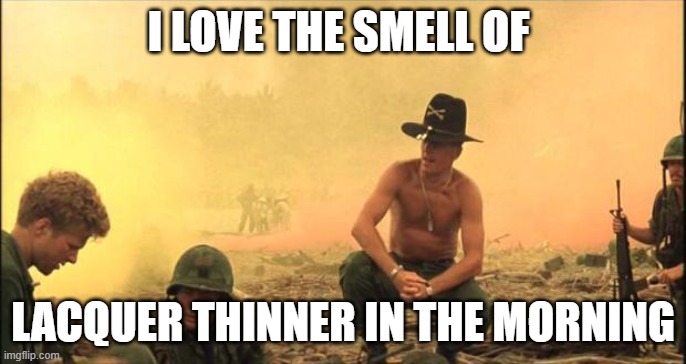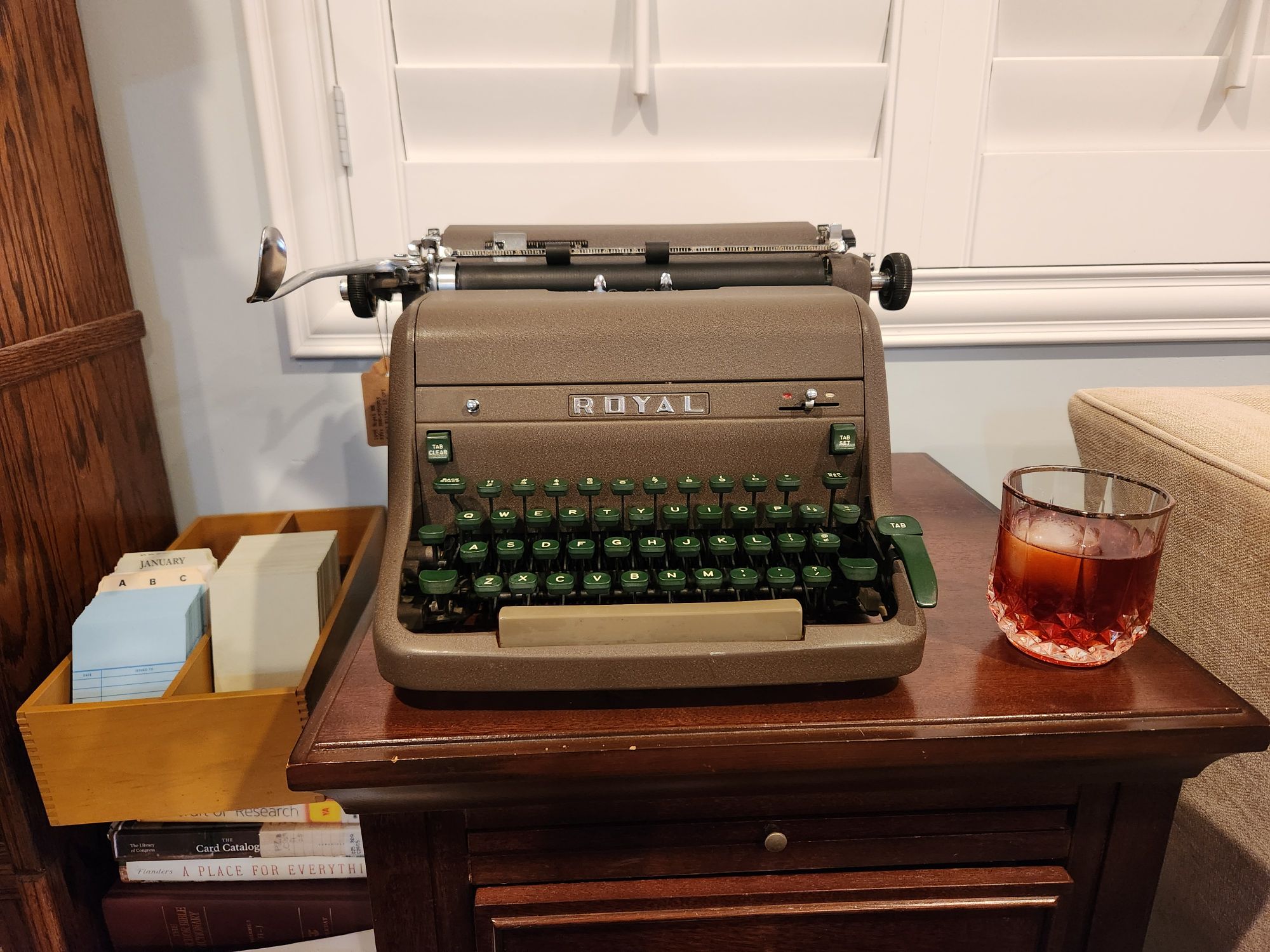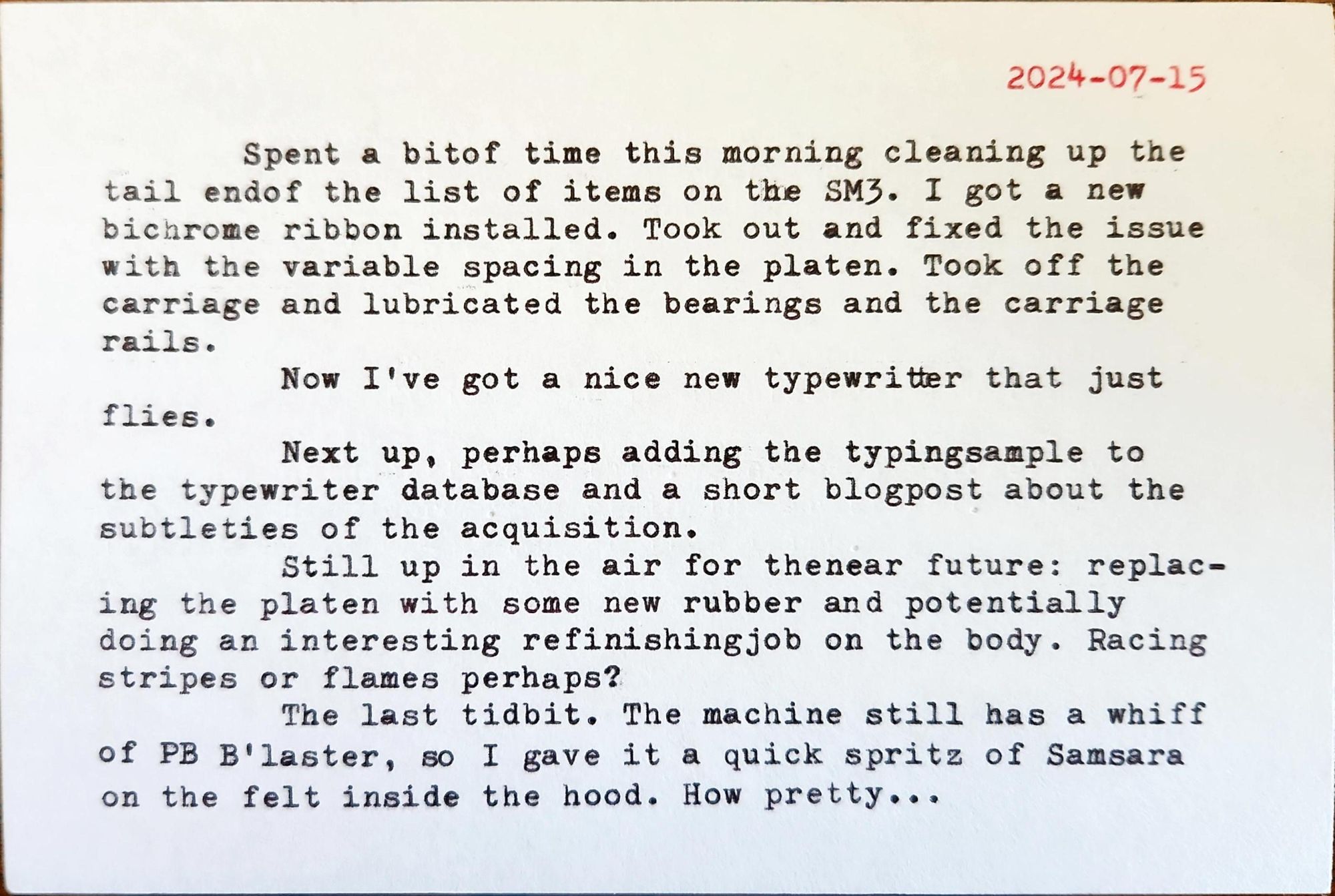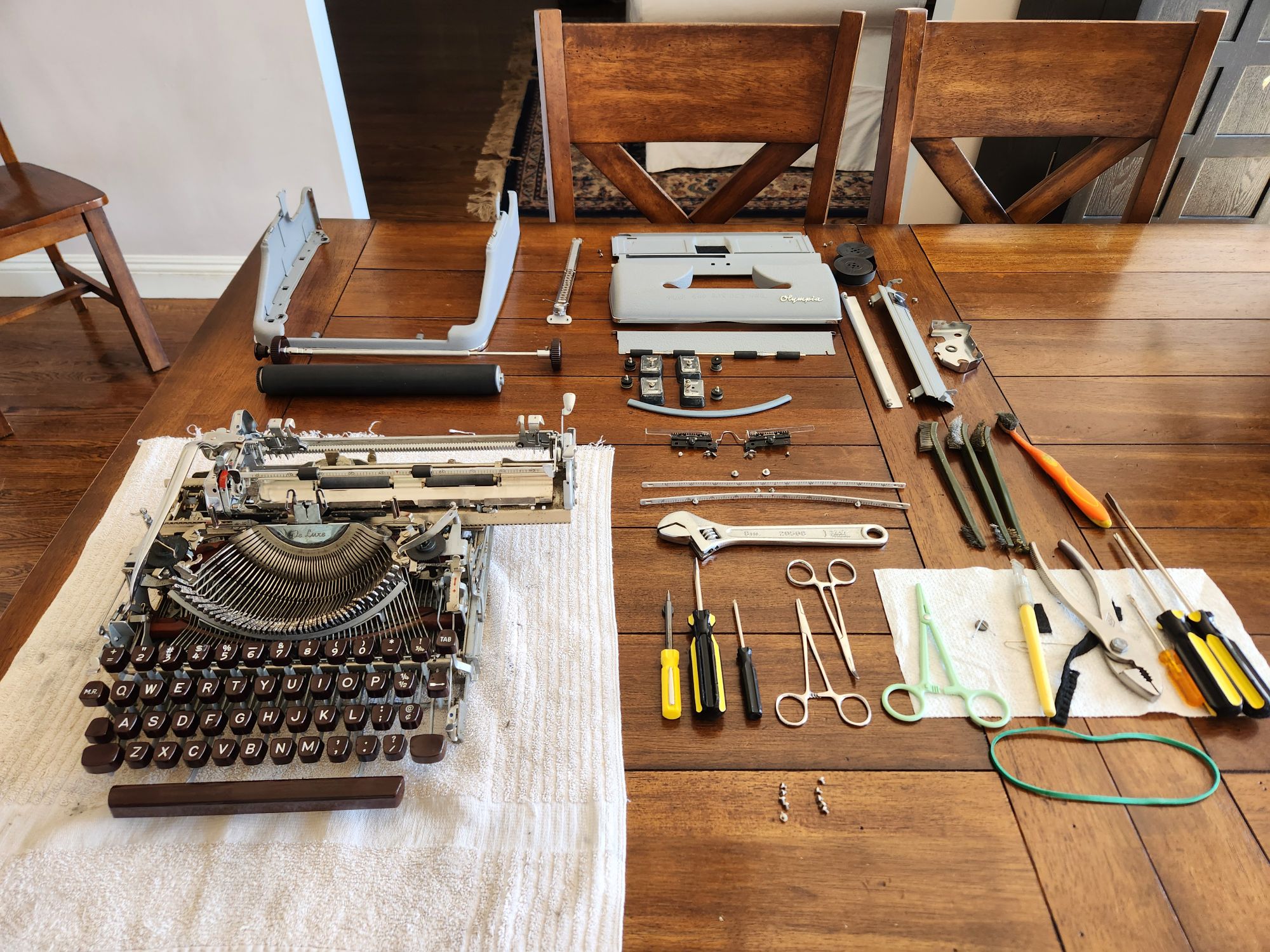



Today’s office. We’ve got a newly finished Shaw-Walker filing cabinet and a 1955 Royal HH standard typewriter.

When I clean my type slugs, I only use bourbon.


I usually type up a short introduction card for the handful of typewriters sitting around the house so that visitors will have an idea of what they’re appreciating. It’s almost like having a museum card on a work of art, but usually mine have a call to type on them. Naturally there are either index cards or paper close at hand to encourage both touching and typing.
Above is the brief introduction to the 1955 Royal HH I finished repairing, cleaning out, and re-assembling today.


Now is the time for all good people to come to the aid of their party.

I love the smell of mineral spirits in the morning.




Thank goodness I’ve got a card catalog big enough to log and cross-file a couple hundred models. I’m thinking of categorizing by manufacturer, by decade, and including typeface samples, which I’ve already been doing as I add them to the typewriter database.



(They might not smile much on your use of mineral spirits while you’re there, so use caution.)

